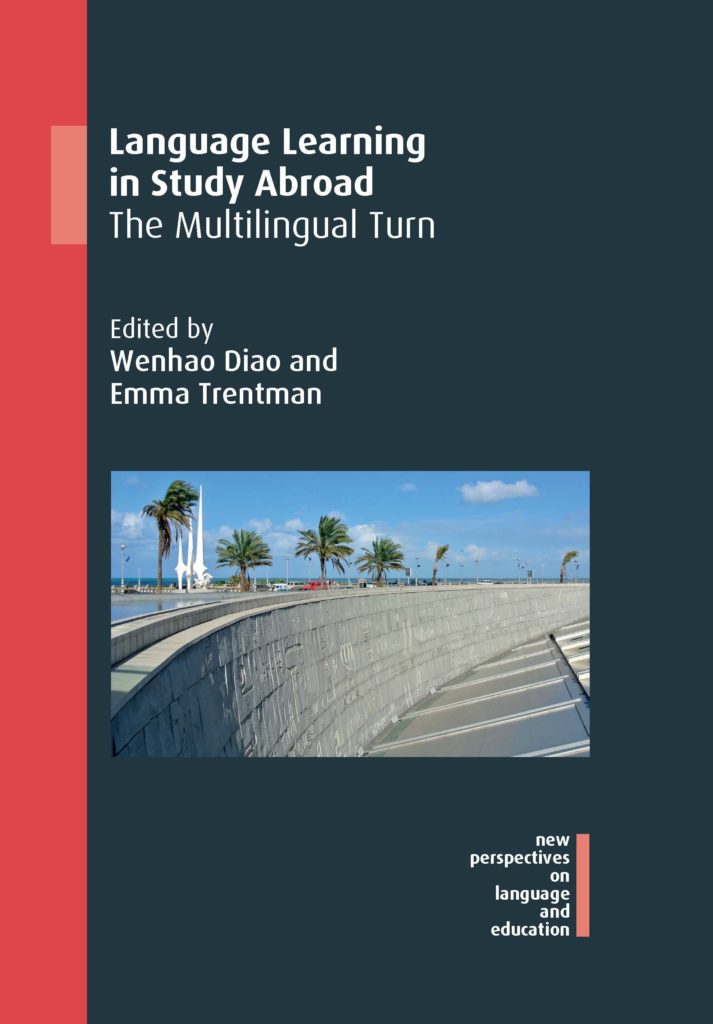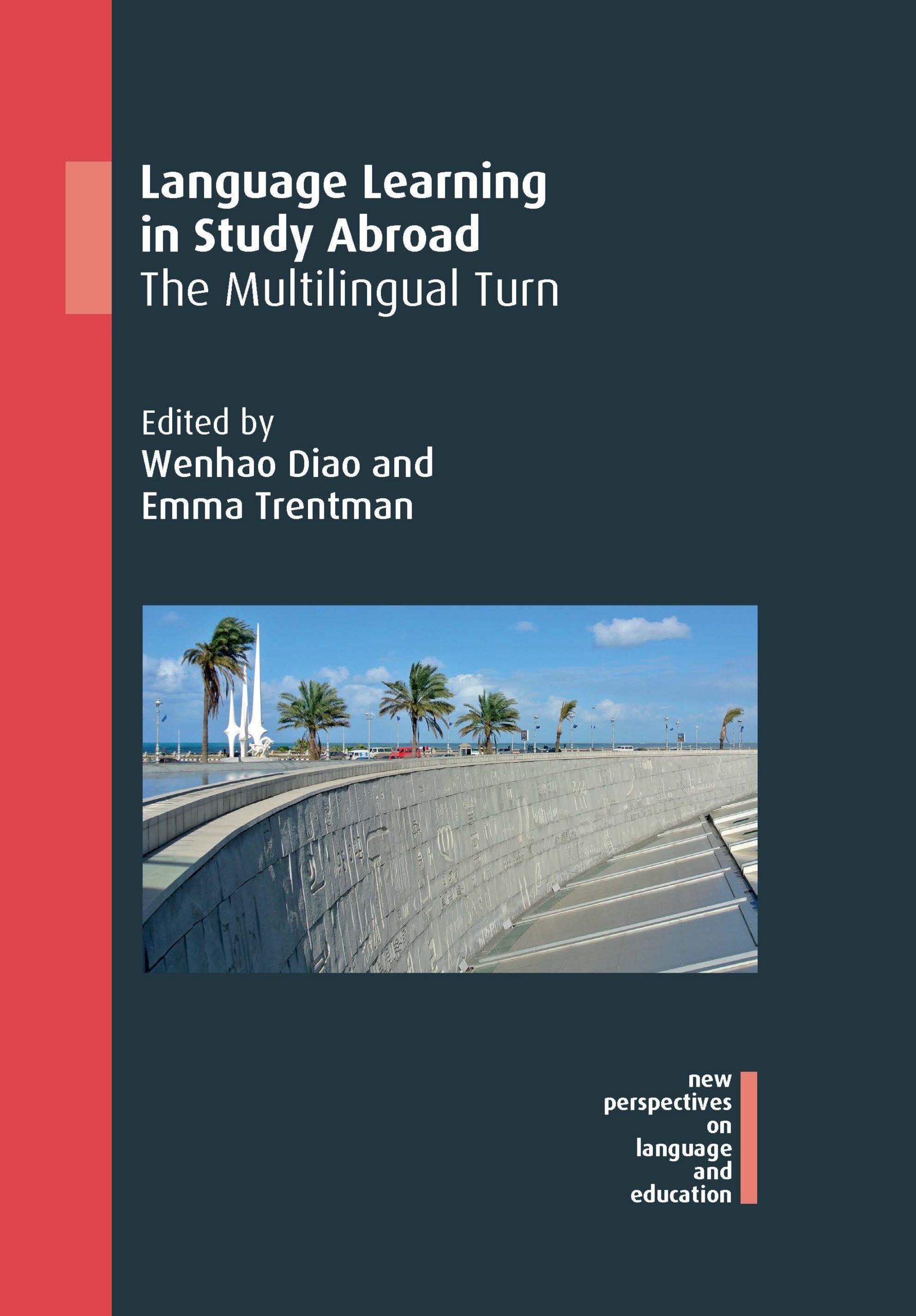Next month marks the release of Language Learning in Study Abroad: The Multilingual Turn, a book I am very excited to see in print!. I’m a co-editor, along with Wenhao Diao, and thought it would be fun to write a post highlighting how this book came about, as well as the chapters themselves and the insights they provide into language learning during study abroad.

So, how did this book come about? It started in 2017, at the conference of the American Association of Applied Linguistics. After attending presentations on study abroad that clearly demonstrated the multilingual nature of these experiences, and presentations on other contexts that theorized multilingual settings in ways that resisted monolingual language ideologies, we wanted to highlight these theoretical approaches in study abroad research. So, we reached out to colleagues we knew were also interested in these topics, and put together a colloquium for the 2018 conference of the American Association of Applied Linguistics, as well as a book proposal. We also began working on the book, a long process due to all the moving parts (chapters, peer reviews of the chapters, revisions, etc.) and the fact that we both had babies. However, we were finally able to submit the book to the publisher in early 2020, were excited to receive positive peer reviews in the summer, and are very much looking forward to its publication in March 2021!
What are the chapters? This is the most exciting part of the book! There are eight chapters (plus our introduction and a conclusion by Lourdes Ortega), each focusing on a multilingual approach to study abroad in a variety of contexts across the world. Despite their disparate geographic settings, there are clear parallels in terms of the value of going beyond monolingual approaches to language learning, and recognizing the ways in which students negotiate their multilingual and social identities to learn languages abroad.
Chapter 1, “Ghanaian Multilinguals on Study Abroad in Tanzania: Learning Swahili through Akan/Twi and Cultures of Storytelling”, by Jamie A. Thomas analyzes a context typically overlooked in the study abroad literature, that of pan-African exchanges. Thomas describes how Ghanaian students and their Tanzanian teacher were able to draw from their multilingual repertoires and shared cultures of storytelling to learn Swahili storytelling traditions, by making comparisons between Swahili and Akan/Twi traditions. This is an excellent example of how drawing upon learners’ multilingual repertoires in the classroom helps expand them.
Chapter 2, “When the Foreign is Familiar: An Afro-Dominican-American Woman’s Experience Translanguaging Race, Ethnicity and Cultural Heritage Learning Portuguese in Brazil”, by Uju Anya, focuses on the experience of Leti, and the ways she drew from her multilingual and multicultural background to learn Portuguese. Anya describes how Leti experienced familiar racial and ethnic positionings in new ways, and the impact of these experiences on both her language learning and understanding of herself.
Chapter 3, “An Investigation of L2 Learning Peer Interactions in Short-Term Study Abroad”, by Janice McGregor examines a frequently overlooked resource for language learning in study abroad contexts, namely one’s peers. Although peer interactions are often devalued, particularly in comparison to interactions with idealized native speakers, this chapter shows how they are in fact a valuable resource for language learning during study abroad.
Chapter 4, “Monolingual Expectations and Plurilingual Realities in Arabic Study Abroad”, by me (Emma Trentman) focuses on the experiences of two Arabic language learners abroad, Bella (studying in Jordan) and Juan (studying in Oman). I show that while monolingual expectations shaped their perspectives and evaluation of their experiences abroad, it was actually their translanguaging practices that contribute to positive experiences interacting with locals and learning Arabic.
Chapter 5, “Language Use, Class and Study Abroad in China”, by Wenhao Diao addresses the role of class, and particularly membership in the transnational global elite, in study abroad, another under-examined topic. Focusing on the experiences of Zoltan and Mae, she demonstrates how their class membership shaped their language learning experiences, including their inability to recognize the translanguaging practices of their Chinese roommates.
Chapter 6, “‘Sorry, I don’t speak any English’: An Activity-Theoretic Account of Language Choice in Study Abroad in South Korea”, by Lucien Brown examines the experiences of Grace, a White learner of Korean who shifts her approach to learning Korean from expecting Korean immersion to claiming an identity as an multilingual international student. This chapter sheds light on the complex connections between languages and cultural meanings in this particular context. I particularly enjoyed this chapter as there are many parallels to my own experiences as a White female Arabic learner, despite the different geographic context.
Chapter 7, “Study Abroad as a Transformative Translanguaging Space for Heritage Speakers of Spanish”, by Tracy Quan details the experiences of Maria, a heritage learner of Spanish studying in Spain (not her ancestral homeland). Through increased comfort with the translanguaging practices she engaged in with her Spanish language partner, she developed a critical awareness of language use and racism both at home and abroad.
Chapter 8, “Encountering Multilingualism in Study Abroad: Sojourners’ Orientations to Linguistic Diversity and Language Hierarchies in Barcelona” by Brandon Tullock focuses on the experiences of Spanish learners studying abroad in Catalonia. These learners took up various orientations to Catalan in this multilingual setting, from not noticing at all, to feeling that it limited their Spanish opportunities, to developing a critical awareness of the sociopolitical situation.
Chapter 9, “Research on Language Learning during Study Abroad: What Next?” by Lourdes Ortega sums up the main themes in the chapter, and outlines themes to guide future study abroad research. These include focusing on the role of place, race, and social exclusion in study abroad, and the need for new theoretical frameworks, including raciolinguistics and intersectionality.
As you can see, this is a very exciting book! Although the research took place in a variety of settings, there are common themes throughout, highlighting the value of multilingual approaches and role of identity negotiations across race, class, and gender during study abroad. Furthermore, while this book has an academic research focus, one of our goals was to make it relevant to study abroad practitioners as well, and we were very excited when one of the anonymous reviewers listed this as a strength of the book! As you can probably tell if you read this blog regularly, connecting research and practice is at the heart of my academic endeavors, and I have to say I wish it was easier to do this in academic publishing.
Finally, I want to highlight the cover blurbs, which I’ve copied below. For me, this was especially meaningful, as these are two scholars I admire deeply, and who have had a profound influence on my career ever since I first read their work in grad school. So, to see their names as the book blurbs was particularly exciting!
“This compelling book ushers research on language learning in study abroad into a new era of commitment to social justice. Countering the myth of monolingual immersion, exploring the multilingual realities of student experiences and expanding the contexts under investigation, the volume will be a landmark contribution to the field.”
Celeste Kinginger, Pennsylvania State University, USA
“This timely volume uniquely illuminates hidden spaces of study abroad research by exposing plurilingual, translingual, and lingua franca realities. Chapters offer new perspectives on study abroad in demystifying the assumptions of monolingual, monocultural, and authentic immersion experiences. The book provides useful insights on linguistic, geographic, and ethnoracial multiplicities of study abroad.”
Ryuko Kubota, University of British Columbia, Canada

Comments
One response to “Language Learning in Study Abroad: The Multilingual Turn”
👏🏽 Thanks for your post! Really excited for this volume, and so appreciative of the experience of developing my chapter contribution.
Cheers x 3!
JT